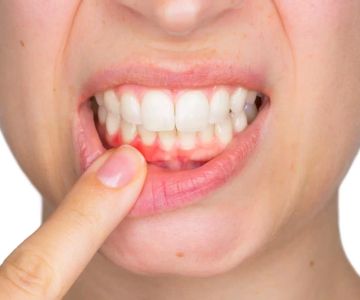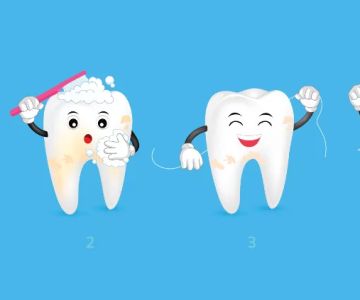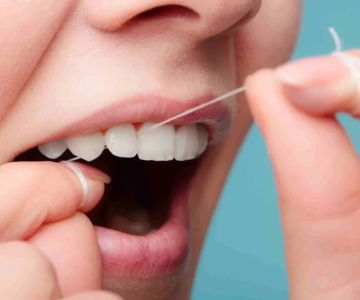How to Handle Tooth Abscesses: A Comprehensive Guide to Treatment and Prevention
- 1. Understanding Tooth Abscesses
- 2. Symptoms of Tooth Abscesses
- 3. Treatment Options for Tooth Abscesses
- 4. Home Remedies for Tooth Abscesses
- 5. Preventing Future Tooth Abscesses
- 6. When to See a Dentist for a Tooth Abscess
1. Understanding Tooth Abscesses
A tooth abscess is a pocket of pus that forms in or around a tooth due to a bacterial infection. It occurs when the tooth's pulp (the innermost part of the tooth) becomes infected and is not treated promptly. If left untreated, a tooth abscess can lead to severe pain, tooth loss, and even the spread of infection to other parts of the body.
Tooth abscesses are typically caused by poor dental hygiene, untreated cavities, or gum disease. In some cases, trauma to the tooth or an underlying health condition can also contribute to the development of an abscess.
2. Symptoms of Tooth Abscesses
Common symptoms of a tooth abscess include:
- Severe, throbbing tooth pain that can radiate to the jaw, neck, or ear
- Sensitivity to hot or cold food and drinks
- Swelling in the face or cheek
- A bad taste or odor in the mouth
- Fever
- Red and swollen gums near the affected tooth
If you experience any of these symptoms, it's crucial to address the issue promptly to prevent complications. A tooth abscess can worsen quickly, causing significant discomfort and health risks.
3. Treatment Options for Tooth Abscesses
There are several treatment options available for managing and treating a tooth abscess:
1. Root Canal Therapy
Root canal therapy is often the primary treatment for a tooth abscess. During this procedure, the dentist will remove the infected pulp from inside the tooth, clean the area, and seal the tooth to prevent further infection. This treatment is often successful in preserving the tooth and preventing the need for extraction.
2. Tooth Extraction
If the infection is severe or the tooth is too damaged to be saved, a dentist may recommend extracting the affected tooth. Extraction removes the source of the infection and helps prevent it from spreading to surrounding teeth or other parts of the body.
3. Drainage of the Abscess
If the abscess has caused significant swelling, a dentist may need to drain the pus from the abscess to relieve pressure and promote healing. This can be done by making a small incision in the gum or tooth to allow the pus to drain out.
4. Antibiotics
In many cases, a dentist will prescribe antibiotics to treat the bacterial infection and prevent it from spreading. Antibiotics are especially important if the infection has spread to other parts of the body or if there is a risk of complications.
4. Home Remedies for Tooth Abscesses
While it's important to seek professional dental care for a tooth abscess, there are some home remedies that can help alleviate pain and discomfort in the meantime:
1. Salt Water Rinse
Rinsing your mouth with warm salt water can help reduce swelling, kill bacteria, and relieve pain associated with a tooth abscess. Mix one teaspoon of salt in a cup of warm water and swish it around your mouth for 30 seconds, then spit it out.
2. Cold Compress
A cold compress applied to the outside of the cheek can help reduce swelling and numb the pain. Simply place an ice pack or cold cloth on the affected area for 15-20 minutes at a time.
3. Over-the-Counter Pain Relief
Over-the-counter pain medications like ibuprofen or acetaminophen can help manage discomfort from a tooth abscess. However, these should only be used temporarily until you can see a dentist for proper treatment.
5. Preventing Future Tooth Abscesses
To reduce the risk of developing tooth abscesses in the future, it's important to maintain good oral hygiene and take care of your teeth and gums:
- Brush your teeth twice a day with fluoride toothpaste
- Floss daily to remove food particles and plaque from between your teeth
- Visit your dentist regularly for check-ups and cleanings
- Avoid sugary foods and drinks that can contribute to cavities
- Wear a mouthguard if you grind your teeth at night
6. When to See a Dentist for a Tooth Abscess
If you suspect that you have a tooth abscess, it's crucial to seek dental care as soon as possible. Early intervention can help prevent the infection from spreading and causing further complications. If you experience severe pain, fever, or swelling that doesn't improve, contact your dentist immediately.
Visit Dentistry Toothtruth for more information on treating tooth abscesses and maintaining good oral health.







 Westgate Dental Arts3.0 (2 review)
Westgate Dental Arts3.0 (2 review) Coventry Family Dental4.0 (247 review)
Coventry Family Dental4.0 (247 review) Familia Dental3.0 (1028 review)
Familia Dental3.0 (1028 review) Dr. Daniel S. Fife, DDS4.0 (31 review)
Dr. Daniel S. Fife, DDS4.0 (31 review) Dentistry At Suburban Square: Michael I. Wollock, DMD4.0 (1228 review)
Dentistry At Suburban Square: Michael I. Wollock, DMD4.0 (1228 review) Comfort Care Dental4.0 (1156 review)
Comfort Care Dental4.0 (1156 review) The Importance of Oral Health Education During Pregnancy for a Healthy Pregnancy
The Importance of Oral Health Education During Pregnancy for a Healthy Pregnancy Why Skipping Dental Checkups Can Lead to Bigger Oral Health Problems
Why Skipping Dental Checkups Can Lead to Bigger Oral Health Problems Best Tips for Brushing Your Teeth Properly for Healthy Gums: Essential Techniques for Oral Health
Best Tips for Brushing Your Teeth Properly for Healthy Gums: Essential Techniques for Oral Health Advantages of Porcelain Dental Restorations
Advantages of Porcelain Dental Restorations How Can Diabetes Cause Tooth and Gum Problems? Preventing and Managing Oral Health Issues
How Can Diabetes Cause Tooth and Gum Problems? Preventing and Managing Oral Health Issues Healthy Habits for Promoting Good Oral Health and Hygiene: Tips for a Healthy Smile
Healthy Habits for Promoting Good Oral Health and Hygiene: Tips for a Healthy Smile